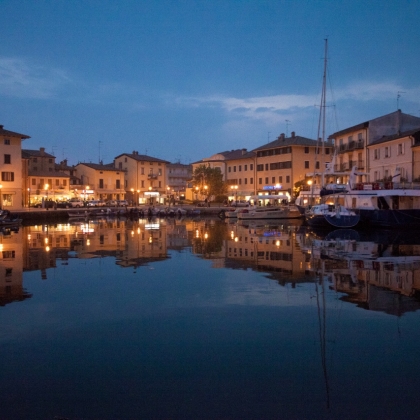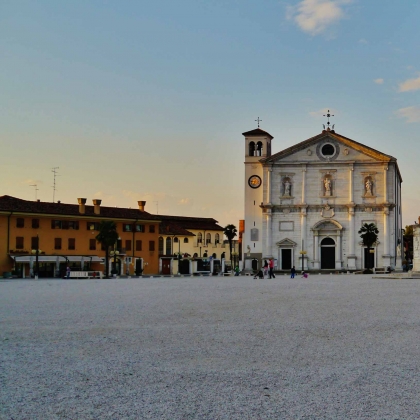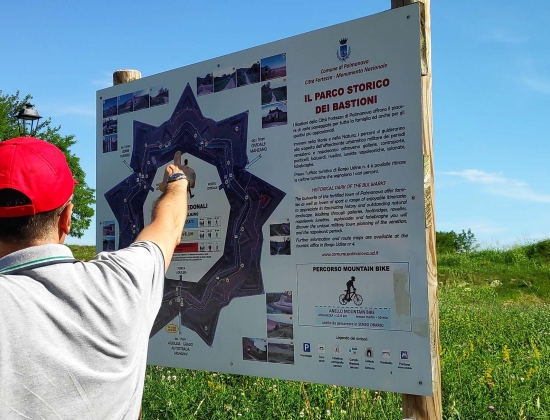The city-fortress of Palmanova is a UNESCO heritage. It was built in 1593 by the Republic of Venice as a military stronghold.
With its plan in the shape of a nine pointed star, Palmanova is a Renaissance city and also an example of military architecture, which shows to the visitor the technical developments of fortifications in the modern era.
Three monumental gateways allow the access into the city. Porta Aquileia was erected in 1598 and in the beginning it was named Marittima. It is covered by Istrian stone and it is the most refined, because during the Serenissima Repubblic of Venice that was the official entrance for prestigious visitors. The gateway leads toward the sea and into the Latin world.
Porta Udine was built between 1604 and 1605. It has a statuesque aspect for the use of ashlar. On both sides there are two columns with two pinnacles on the top of them. Furthermore you can admire two wheels, which were necessary for the raising of the drawbridge. The gateway leads to the mountain and toward Northern Europe.
Porta Cividale was built between 1604 and 1605. You will come across it from the East. The facade is covered by unrefined ashlar with white and grey stone. Due to its watchtowers, that are connected by the baluster, this gateway has a more serious aspect than the other two. It leads to the East toward Cividale, Slovenia and the Collio.
In the historic civic museum of Palmanova you can deeply understand the concept that sustains the complex urban structure and the fortification system of the city. Whereas in the historic military museum are collected relics and documents regarding the Corps and the Units, that came in succession in Palmanova from 1593 until the Second World War. From here starts the itinerary on the fortified system that surrounds the city through curtains, knights, loggias, bastions, falsabraghe (external lower city walls), moats, ravelins and lunettes.
All the inner ways leads to Piazza Grande, an open-air hexagonal space on which the cathedral of the XVII century dominates: a respected example of the Venetian architecture in the region of Friuli.





